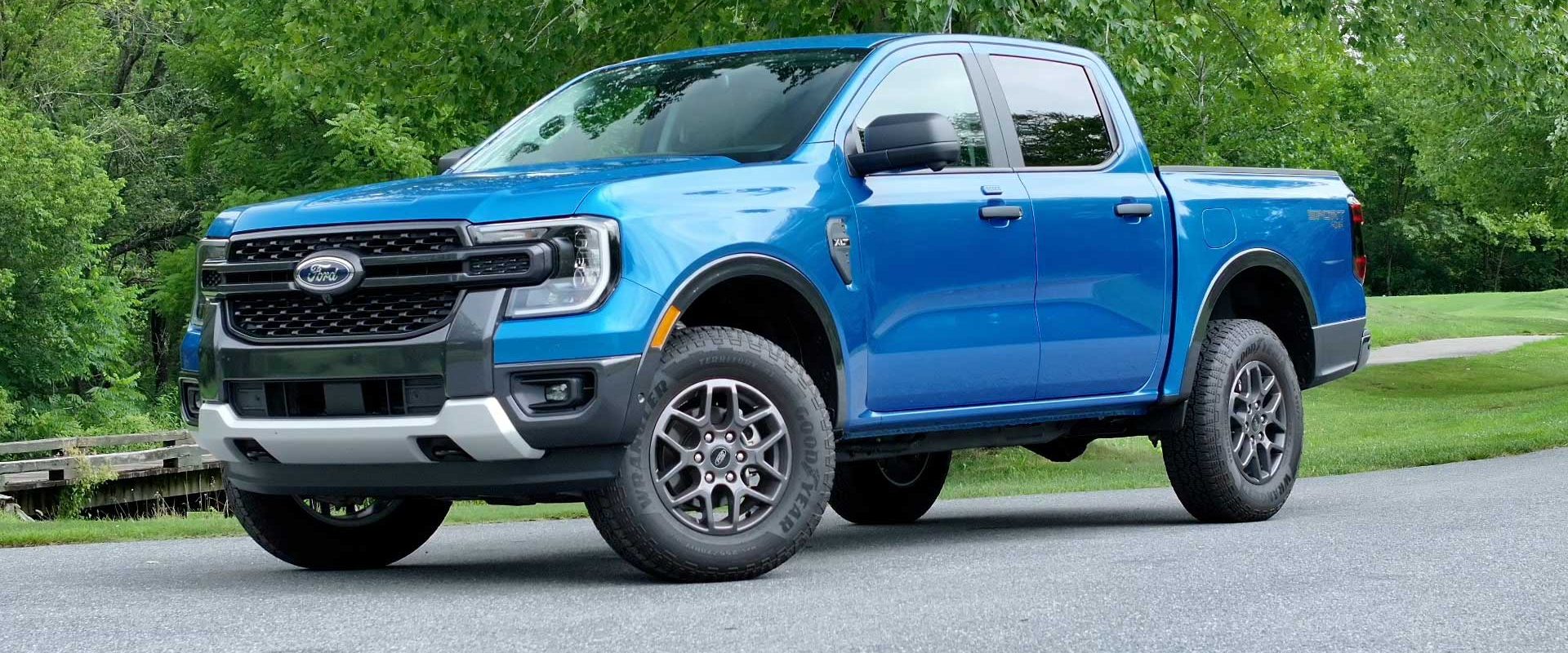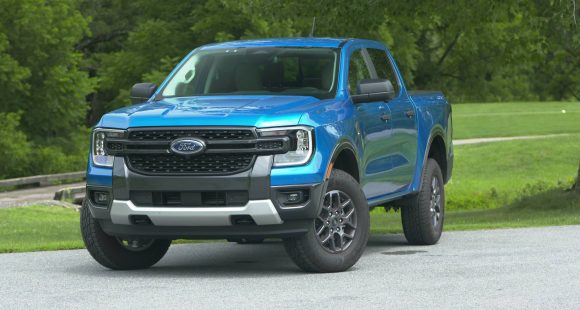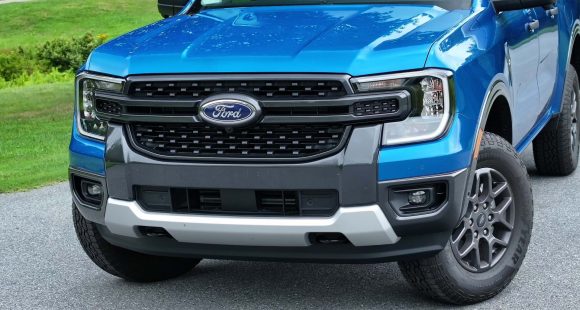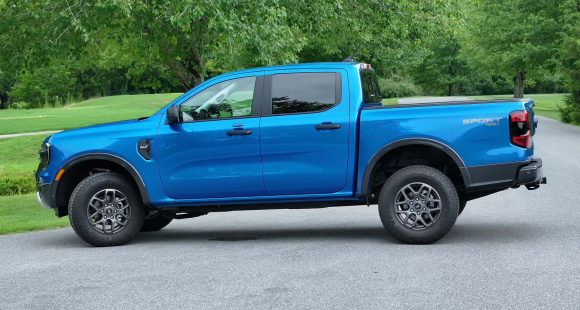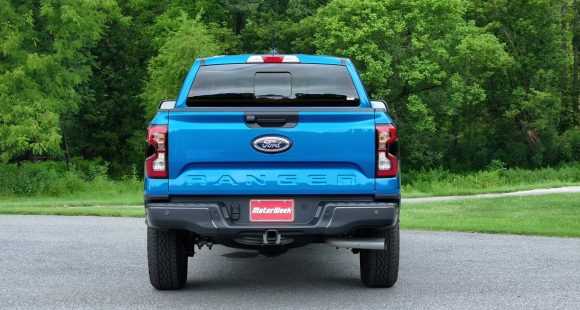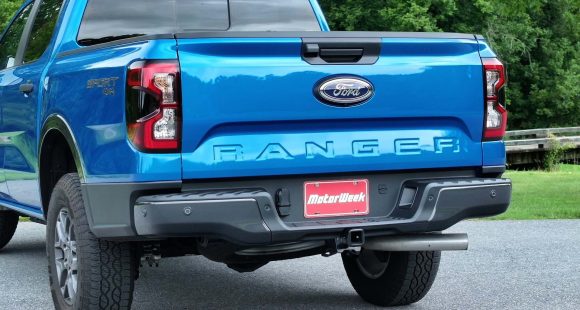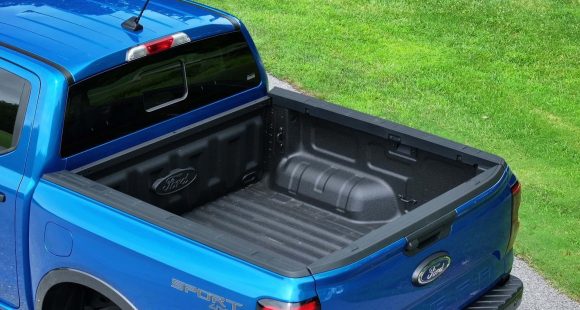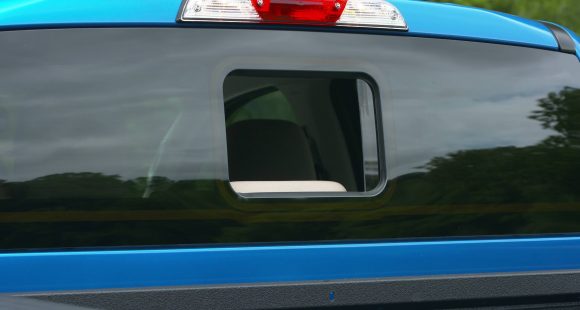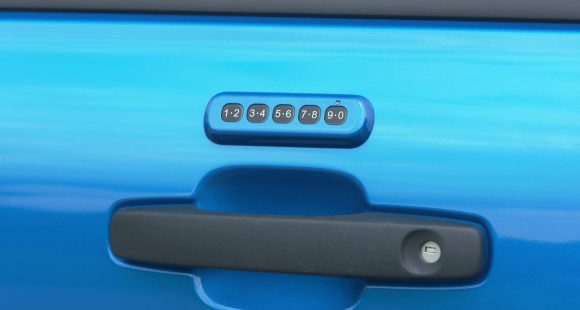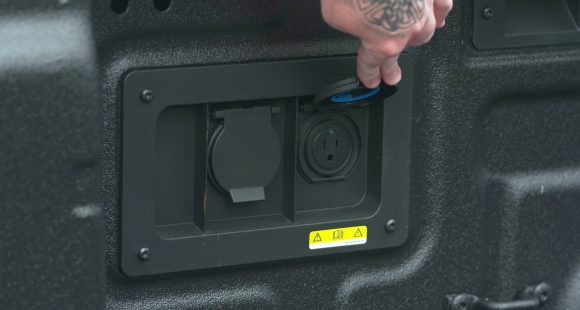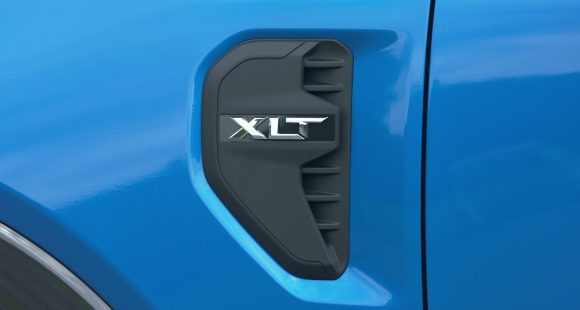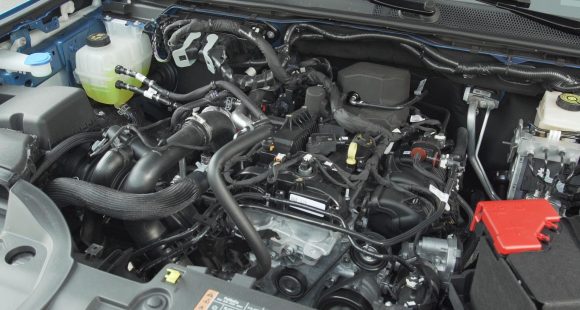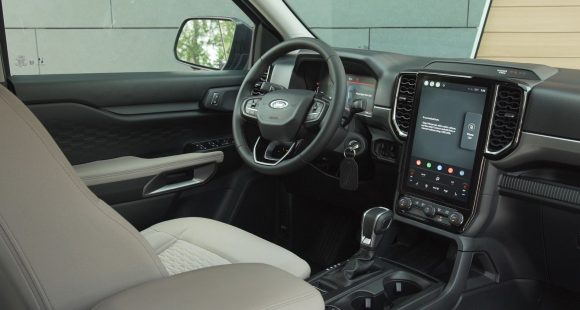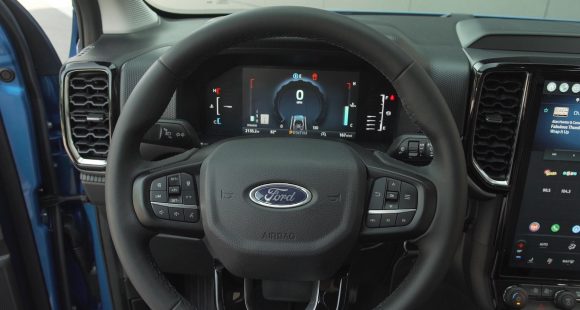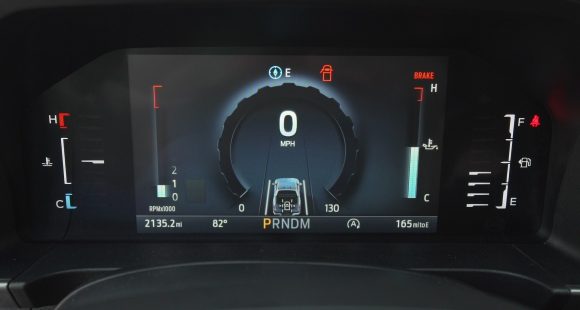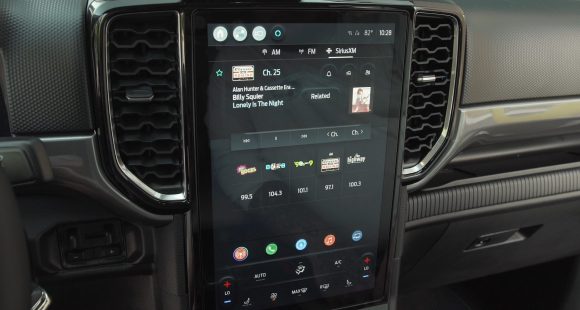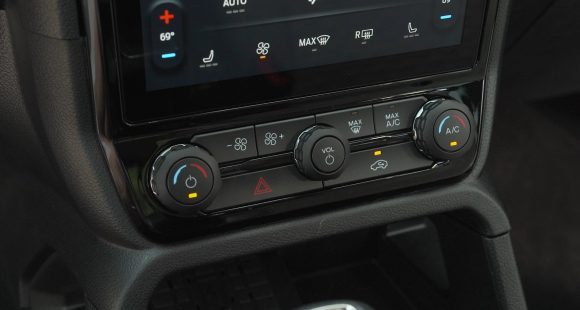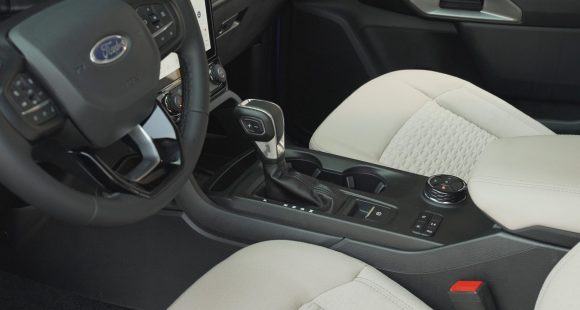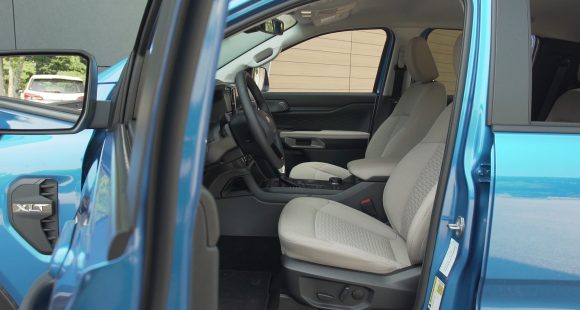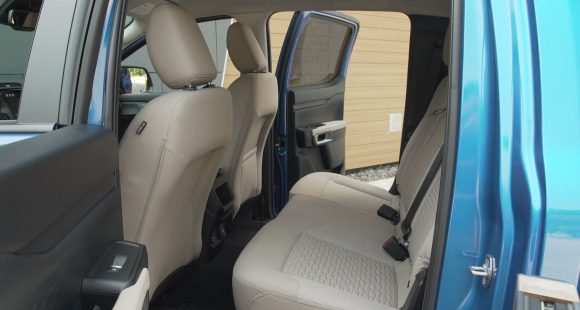2024 Ford Ranger
Ranger Ranges Closer To F-150
After being absent from the American market for 8 years, 2019 saw the return of one of Ford’s most venerable truck names, the Ranger. And that EcoBoosted midsize rig quickly picked up where the original compact Ranger left off. Well, now it’s time for a new fifth-generation Ranger. So, let’s find out if the latest global Ranger is still a winner.
Ford knows a thing or two about building pickup trucks, and certainly has more options available than any other truck maker; from small fuel-sipping hybrids to monster haulers, and everything in between, which is where this 2024 Ford Ranger fits in.
Ford’s latest mid-size offering is now available as a SuperCrew four-door only, with only a 59.6-inch–call it a 5-foot bed, though the wheelbase has grown, up 2-inches, to 128.7. Everything is still attached to a rugged full frame; 17-inch wheels are standard on XL and XLT, with 18s available; standard on top Lariat trim. Regardless of trim, overall styling of the new Ranger is much more attractive than the previous generation. XLTs get a sliding rear window, plus LED lighting and a 120-volt outlet for the bed.
Our XLT SuperCrew had the standard, carryover 2.3-liter EcoBoost I4 engine rated at 270 horsepower and 310 lb-ft of torque. But a 315-horsepower 2.7-liter twin-turbo Ecoboost V6 is now an option. Rear-wheel-drive remains standard, with 4X4 setups available either with or without a locking rear diff. All get a 10-speed automatic transmission with a full-size max tow rating of 7,500 lbs.
This EcoBoost I-4 and 10-speed combo has been on the Ford menu for quite a while now and feels well sorted here in the Ranger; seemingly not in as big of a rush to get into higher gears as earlier evolutions. While also noticeably smoother than before, ride quality is still very truck-like, which is the way most truck buyers prefer it. For a more car-like experience, the Maverick awaits.
While also noticeably smoother than before, ride quality is still very truck-like.
The Ranger’s true truck-like vibe carries over inside too, where things are more rugged and durable than plush; but the huge center touchscreen certainly sets a techy tone. It’s available in either 10- or 12-inch versions, and while it easily dominates the dash and is mostly intuitive to use, physical knobs and buttons for audio and climate at the base of the screen are a big plus. XLTs get wireless phone charging, navigation, and some additional safety features including lane keeping assistance. While the rear seat bench has belts for three, two adults will be a more comfortable situation with adequate headroom and legroom. The seat bottom folds up easily to access plastic storage bins. Optional trickle-down tech from the F-150 includes Pro Trailer Backup Assist and a host of other features to make your towing life easier.
Off to Mason Dixon Dragway to see what kind of numbers we could pull with our XLT 4X4. After hooking up very well, with a nice jump off the line, we hauled to 60 mph in a very respectable 7.1 seconds. Gear changes were a little on the clunky side, but power drop-off during shifts was pretty minor. Both engine noise and road noise were substantial going down the track, as we finished the quarter-mile in 15.6 seconds at 87 mph. When it came to reducing speed, we found a very soft brake pedal with minimal feedback, and longish 131-foot stops from 60.
This new-gen Ranger does come with some major suspension changes. The architecture is the same, but the pieces are now mostly made of aluminum and composites rather than steel. Combine that with a platform that’s over 2 inches wider than before, and you’ve got a smoother and more stable Ranger. Steering remains light but vague, so it did take us quite a few runs through the cones to get comfortable with the body roll and determine how much steering input was needed. But, in the end, we found nothing out of character for a modern pickup truck.
Government Fuel Economy Ratings for the I4 are 20 City, 24 Highway, and 22 Combined. We averaged a quite good 23.3 mpg of Regular. That’s an average Energy Impact Score, with use of 13.5 barrels of oil annually and 6.6 tons of CO2 emissions.
Pricing ranges from $34,315 for XL to $45,275 for a Lariat, with XLTs slotting in between at $37,755; four-wheel-drive, an additional $3,485.
Having the Maverick in the lineup to take care of the entry-level light duty pickup crowd has allowed the midsize 2024 Ford Ranger to grow closer to the F-150, packing in more features than ever before. On that score, the now bigger, and better Ranger is all the truck most homeowners will ever need.
Specifications
As Tested
- Engine: 2.3-liter EcoBoost I-4
- Transmission: 10-speed auto
- Horsepower: 270
- Torque: 310 lb-ft
- EPA: 20 City | 24 Highway | 22 Combined
- 0-60 mph: 7.1 seconds
- 1/4 Mile: 15.6 seconds at 87 mph
- Braking, 60-0 (avg): 131 feet
- MW Fuel Economy: 23.3 mpg (Regular)
- Towing: up to 7,500 lbs.




